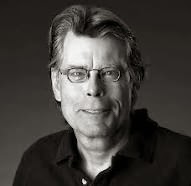How do fiction writers generate their ideas? It’s one of the most difficult questions for a writer to answer, maybe because the act of creativity is at its heart random, chaotic and unexpected, not a structured formula to be shared like a long-held family recipe.
Sometimes the best stories do come from simply plotting your story out through a strict framework that follows a character on a quest for his desire, as delineated in dozens of how-to-write-fiction books and magazines. Sometimes they come from brainstorming – from spiralling out more words, phrases and thoughts from a central word. And sometimes you simply dream them.
The first chapter of my novel Sneaker Wave literally came to me in a dream. I’d written the manuscript, but hated the way the book started. Something was missing, but I couldn’t figure out what. This shortcoming haunted me for months, until one night my subconscious finally pushed it forward. I dreamed about a father and son on a seemingly idyllic family outing, one suddenly interrupted by an unexpected and deliberate tragedy. I awoke, sat straight up in bed and knew I finally had the beginning to my novel.
So a writer can arrive at an idea for a scene or a story in dozens of ways – plotting, brainstorming, dreaming, stealing and sometimes simply stumbling upon them in a manner they don’t understand. But whatever the process, some of the best ideas have one thing in common in their origin. And that one thing is actually the use of two things – two very different things.
I’m talking about a blending technique that master horror writer Stephen King and Renaissance inventor and artist Leonardo Da Vinci have both put to use, even though their creations came five centuries apart.
Da Vinci, for his part, was considered one of the most diverse talents to ever live. The man who came up with concepts for a helicopter and tank and painted the Mona Lisa often found creativity by blending together two completely unrelated items, following a principle that everything connects to everything else in some way. He made connections that no one else would, letting his imagination fill in the gaps between the two very different things. He would often combine art and science, and, for example, in the case of his flying machine invention, combined his fascination with birds with his knowledge of aerodynamics. No matter what he did, the results were usually brilliant.
 |
| Da Vinci |
So what does this have to do with Stephen King, who has used his often dark creativity to sell 350 million books? King, in his 2000 book On Writing: A Memoir of the Craft, tells the story of working as a high school janitor one summer and venturing into the girls’ changing room, a foreign place with tampon dispensers and shower curtains. Later he would envision the opening of a story, a girls’ gym shower room where there were no curtains and one girl gets her first period and is pelted with insults and tampons from her nasty classmates. The girl fights back the only way she can, through telekinesis, the movement of objects through thoughts or willpower, a power King had read can come to some girls in their early adolescence, at about the time of their first period. Two unrelated ideas – adolescent cruelty and telekinesis – came together to provide the start to his first published novel, Carrie. It might be a story, and not one of Da Vinci’s inventions, but the creative process is the same.
In the dream that gave me the first chapter for Sneaker Wave, my subconscious mind had combined a pleasurable father/son activity, a Sunday morning jog, with a deliberately catastrophic event. After those two polar opposite ideas collided and blended so perfectly, the chapter almost wrote itself, and when people describe the chapter as “dreamlike” I almost have to laugh.
The overall idea for my novel also combines two divergent things. Some would quickly suggest these two are 1) a back yard full of partying teens and 2) a random act of violence. But that’s not it. Those two things easily go together, at least in many peoples’ minds, and in fact an actual incident like this did provide some of the inspiration for me to begin my novel. Where the story really comes to life, however, is when this random act of violence is combined with a participant who possesses a conscience, albeit one hidden so deeply that he even wonders if it exists.
This is where my story and many others find their vitality: in the electricity that sparks in the gap between two unrelated ideas brought together.
Consider the work of American writer Cormac McCarthy. In his Pulitzer Prize-winning novel, The Road, McCarthy combines an apocalyptic world with a father determined to safely raise his young son. The result is a brutally tender love story unlike any you’ve read before.
Or McCarthy’s No Country for Old Men, a novel that initially appears to combine ruthless drug gangs with a mostly honest man who winds up with their money. At this book’s heart, though, is a story that stirs together an increasingly violent world and an aging lawman who’s lost faith in himself to stop the carnage.
Doesn’t matter where your two unrelated ideas come from. When they come together in a way that generates creative tension, new insights and perhaps something wholly unexpected for your readers, you’ll know it. Stephen King uses one word to describe this moment of cognition: “Pow.” If he was still around, I’m sure Leonardo Da Vinci would agree.

